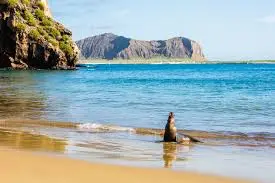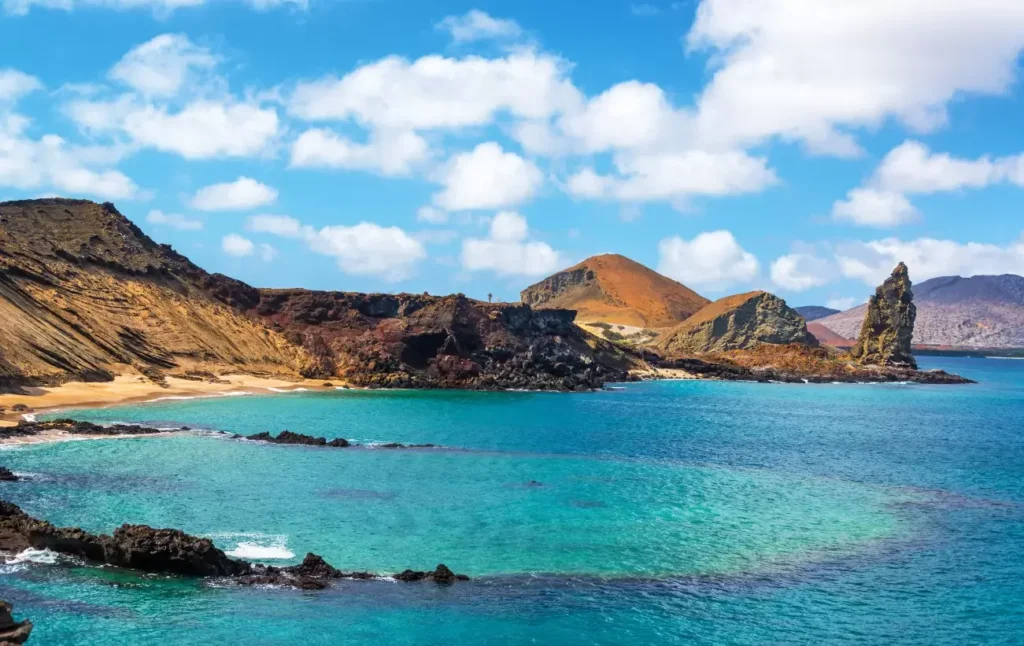The Magnificent Frigatebird is a large ocean bird known for its long wings and smooth flying. It flies very high above the oceans, including around the Galapagos Islands, often gliding for hours without flapping its wings. This bird is easy to recognize because of its black feathers and the bright red pouch that males puff up during mating season. These birds mostly live in warm tropical and subtropical areas.
Red Throat Pouch of Males Frigatebird
The red throat pouch, also called the gular sac, is a standout feature of the Magnificent Frigatebird, especially during the breeding season. The male bird inflates this bright red pouch, which can grow to almost half the size of its body, to attract female frigatebirds. The vibrant color shows the bird is healthy and strong, making it appealing to potential mates. The pouch is made of stretchy skin and gets its bright red color from special pigments the bird gets through its food.
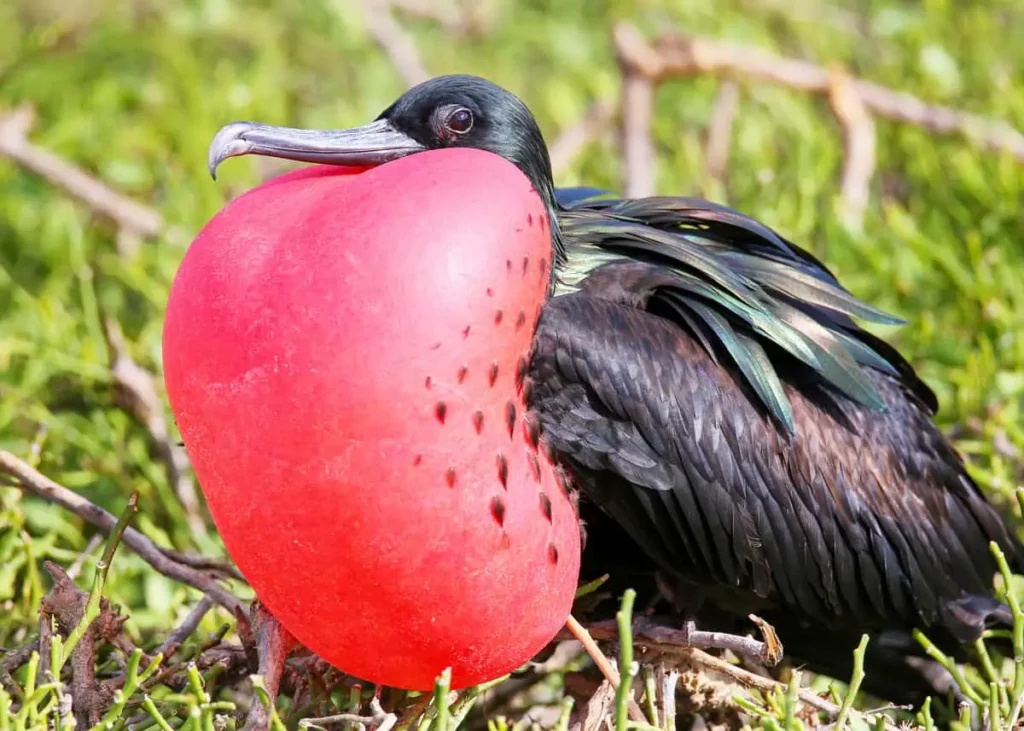
During courtship rituals, males gather, inflate their pouches, produce drumming sounds, extend their wings, and call out to passing females, with the females choosing mates based on the size and color of the pouch. This behavior is a classic example of sexual selection, helps in species differentiation and provides opportunities for tourist attraction and scientific research in the Galapagos Islands and other breeding sites. The condition of the pouch can serve as an indicator of the bird’s overall health, making it a valuable tool for conservationists monitoring environmental changes and the well-being of frigatebird populations.
Kleptoparasitism
Kleptoparasitism is a tricky way of getting food that some birds, like the Magnificent Frigatebird, use. Instead of catching their own food, these smart birds steal food from other seabirds while flying. For example, they might grab fish from birds like Blue Footed Boobies or terns. By doing this, frigatebirds save energy and don’t have to work as hard to find food. While it may seem unfair, this type of stealing is a normal survival method in bird communities. Some birds, like frigatebirds, are very good at it, while others have learned how to protect their food. It’s an interesting part of how nature works!
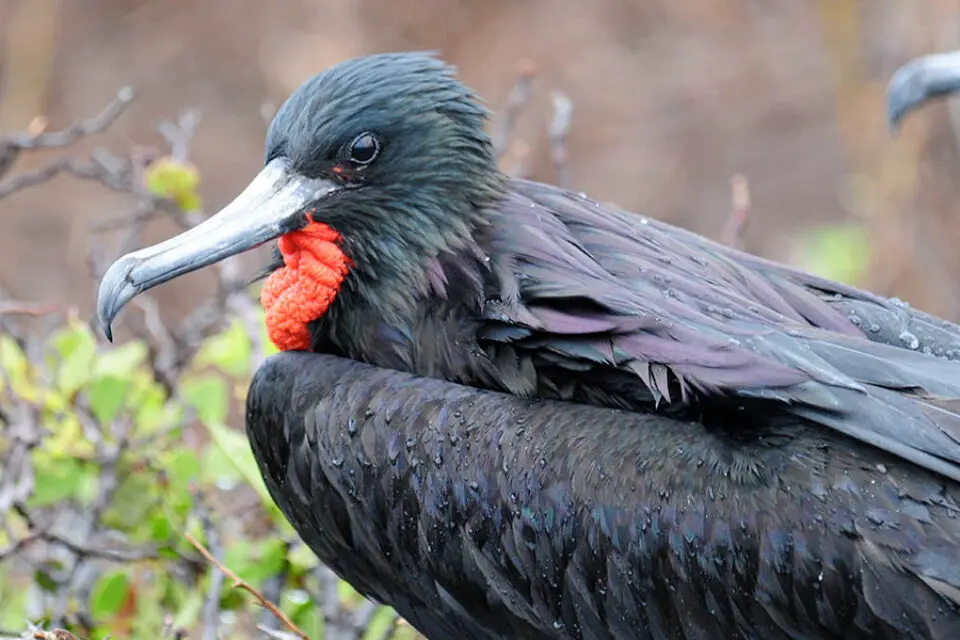
Where To See these Magnificent Frigatebirds?
If you want to see frigatebirds in the Galápagos Islands, there are several great spots to explore:
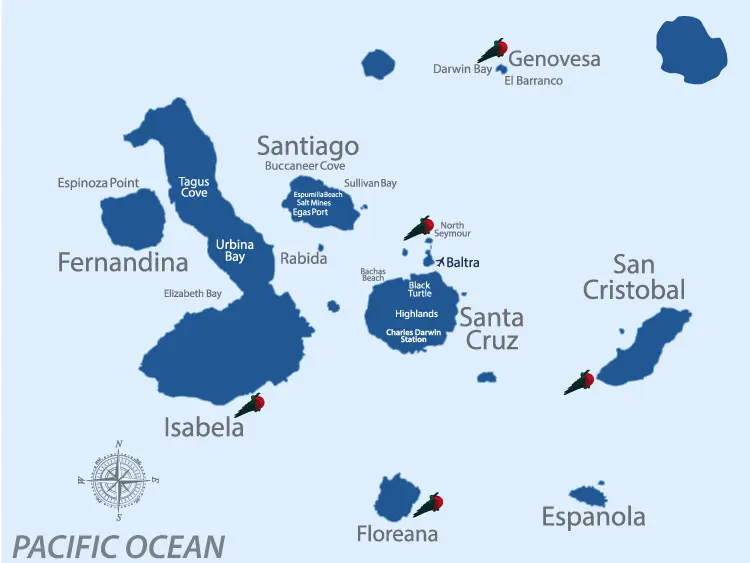
- North Seymour Island: A top location to observe Magnificent Frigatebirds. Here, you’ll find a large nesting colony and can see males displaying their red pouches during mating season.
- Genovesa Island: Known as the “Bird Island,” this is a prime location for birdwatchers. It hosts frigatebirds along with species like red-footed and Nazca boobies.
- San Cristóbal Island: Magnificent Frigatebirds are often seen around Puerto Baquerizo Moreno and Cerro Tijeretas (Frigatebird Hill), where you can observe both Magnificent and Great Frigatebirds.
- Isabela Island: While not as concentrated as other islands, you can still spot frigatebirds soaring near the coastlines.
- Floreana Island: Frigatebirds can be observed along the shores, especially during snorkeling or panga rides.
Throughout the Galápagos Islands, you can catch glimpses of these magnificent frigatebirds soaring high above the waves. If you’re on a cruise aboard the Nemo II or Nemo III, you’ll have an even better chance of seeing them. These birds often follow boats, effortlessly gliding on the wind currents created by the vessels. It’s a spectacular sight, adding a touch of nature’s wonder to your journey through the islands
Conservation Efforts
Conservation efforts for magnificent frigatebirds focus on protecting their habitats, reducing threats, and promoting awareness. Organizations and governments collaborate to establish marine protected areas, safeguarding crucial nesting sites and foraging grounds. Monitoring programs track population trends and assess the impact of human activities, such as fishing and pollution, on frigatebird populations.
Efforts also include mitigating risks from invasive species and climate change. Educational initiatives raise awareness about the importance of magnificent frigatebirds in marine ecosystems and encourage responsible tourism practices. By addressing these challenges and engaging local communities, conservationists strive to ensure a sustainable future for these iconic seabirds.
